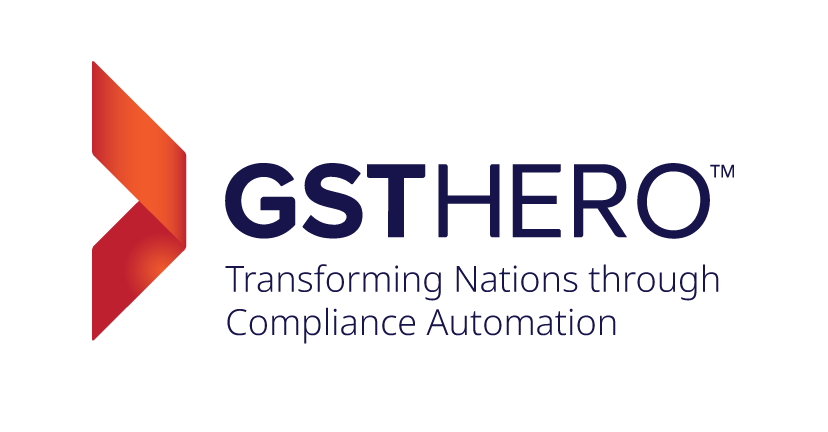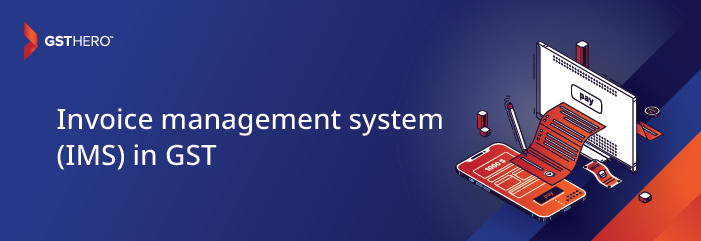October 14, 2024, marks a significant turning point for businesses under GST. The introduction of the Invoice Management System (IMS) is intended to change how companies manage their GST invoices and Input Tax Credit (ITC) claims.
In this blog, we will dive into the latest updates regarding the IMS, analyze its essential features, and discuss how it benefits businesses—especially in reconciling invoices and improving the exactness of ITC claims.
You'll also learn about the challenges companies might encounter while transitioning to this approach, particularly small and medium-sized corporations (SMEs). Whether you're a tax professional or a business proprietor, this comprehensive guide will provide you with everything you need to know to take full advantage of the new IMS and stay forward in the developing GST landscape.
What is the Invoice Management System (IMS)?
The Invoice Management System (IMS), launched on October 14, 2024, is a component submitted by the Goods and Services Tax Network (GSTN). It offers enterprises a more structured technique for managing invoices and claiming Input Tax Credit (ITC). In the past, companies often encountered challenges in reconciling GST invoices with those issued by suppliers, leading to dissimilarities in ITC claims, delayed refund under GST, and in some circumstances, penalties.
IMS was developed to decode these issues by authorizing taxpayers to track, accept, reject, or defer invoices uploaded by their suppliers in real time. The system assures that only verified and proper invoices are utilized to compute ITC, which is important for businesses to remain obedient under the Goods and Services Tax (GST) regime.
Workflow of the Invoice Management System (IMS)
- Supplier Submission:
Suppliers submit their GSTR-1 by the 11th of each month, or they can use the Invoice Furnishing Facility (IFF) or amend invoices via GSTR-1A. GSTR-1A that can be submitted until the recipient files their GSTR-3B for that period. - Invoice Visibility:
Once the supplier saves and submits the invoice, it appears on the recipient's IMS dashboard and will eventually be included in GSTR-2B. - Dashboard Features:
The IMS dashboard displays essential details such as the supplier's GSTIN, trade name, invoice number, and invoice type. - Recipient Actions:
Recipients must act on each invoice within a specific timeframe. They have three options:- ACCEPT: The invoice becomes part of the recipient's auto-generated ITC statement (GSTR-2B).
- REJECT: The invoice is excluded from the ITC report.
- PENDING: The invoice is carried forward to the next month and does not count towards the current month's GSTR-2B.
- Deemed Acceptance:
If the recipient does not take any action on an invoice, it is deemed accepted and automatically included in GSTR-2B. - Handling Amendments:
If suppliers amend an accepted or pending invoice, the updated version replaces the old invoice. The recipient must take action on this amended invoice.
Amendments made via GSTR-1A are reflected in the recipient's GSTR-2B in the following month. - Future Pending Invoices:
Recipients can avail of pending invoices in future months, subject to the limitations outlined in Section 16(4) of the CGST Act, 2017.
Benefits:
- Streamlined ITC Claims: The IMS simplifies the process of claiming ITC by allowing recipients to manage invoices efficiently.
- Reduced Compliance Burden: Automated updates and reminders help taxpayers stay compliant with GST regulations.
This structured approach aids in minimizing bottlenecks associated with ITC claims, ensuring a smoother compliance experience for all parties involved.
What types of documents will IMS display?
The IMS dashboard will showcase the following records from supplier filings:
- B2B Invoices: This will include both the original invoices and any subsequent amendments.
- B2B Debit and Credit Notes: Original notes and their amendments will also be included.
- Eco [9(5)] Invoices: These invoices, along with any amendments, will be displayed.
Exclusions:
Certain documents that do not meet the criteria for Input Tax Credit (ITC) due to:
- Place of Supply (POS) regulations
- CGST Section 16(4)
Will be omitted from the IMS dashboard and will instead appear in the ‘ITC Not Available’ section of GSTR-2B.
Who Can Access IMS?
The Invoice Management System (IMS) is available to the following entities:
- GST-registered taxpayers
- Special Economic Zone (SEZ) units
- SEZ developers
- Casual taxpayers
Access to IMS can be obtained directly through the GST portal by following this path: Dashboard > Services > Returns > Invoice Management System (IMS) Dashboard.
What Actions Can Be Performed in IMS?
IMS allows users to take three key actions regarding invoices and Credit/Debit Notes (CDNs):
- Accept: This indicates that the invoice is ready for Input Tax Credit (ITC) in GSTR-2B.
- Reject: This action removes the invoice from being eligible for ITC in GSTR-3B.
- Pending: This option postpones any action on the invoice for a future date.
Note: If no action is taken, the invoice will be treated as accepted by default.
Essential Components of the IMS
The IMS is equipped with several components aimed at facilitating and improving the invoice management process. Here’s an analysis of the core functionalities:
Real-Time Invoice Tracking
One of the standout components of IMS is its real-time invoice tracking ability. Taxpayers can now consider and act on invoices as they are uploaded by suppliers, providing they can make immediate decisions regarding their Input Tax Credit claims. This not only speeds up the reconciliation procedure but also minimizes mistakes.
Considered Acceptance of Invoices
If a taxpayer does not function on an invoice by the 14th of the month, IMS automatically considers the invoice as accepted. This furnishes flexibility to businesses that may have increased volumes of transactions but guarantee that any valid ITC is not missed.
Seamless Integration with GSTR-2B
IMS functions seamlessly with GSTR-2B, the auto-generated form that documents all invoices eligible for ITC. Accepted invoices under IMS are instantly reflected in GSTR-2B, permitting companies to easily claim their ITC without stressing about invoice mismatches.
Managing Amendments and Corrections
IMS also helps with invoice amendments. If a supplier makes modifications to an invoice, the system automatically reflects these amendments, and enterprises can examine the updated invoice before finalizing their ITC claims.
Bulk Actions and Offline Review
For businesses trading with large numbers of transactions, IMS permits bulk actions on invoices. Taxpayers can accept, reject, or observe numerous invoices as pending, all in one go which will be a time saver. Further, invoices can be downloaded in an Excel format for offline review.
Advantages of the Invoice Management System
The introduction of IMS is proportional to bringing benefits to businesses, specifically those with high transaction volumes or those struggling with invoice reconciliation problems. Some of the considerable advantages include:
Improved Accuracy in ITC Claims
One of the immediate advantages of IMS is its capability to enhance the exactness of ITC claims. By permitting enterprises to review invoices before filing, IMS helps to prevent errors, fraudulent lawsuits, and conflicts during GST audits.
Reduced Administrative Burden
With components like bulk actions, real-time tracking, and automated deemed approval, IMS decreases the manual workload on businesses, allowing them to focus on core operations rather than continuously monitoring their GST compliance.
Enhanced Cash Flow Management
IMS authorizes businesses to handle their cash flows better by assuring timely and accurate ITC claims. This reduces the chances of deferred refunds or penalties due to errors in GST return filing.
Improved Transparency
The system improves transparency between suppliers and recipients by permitting both parties to view and act on the same set of invoices. This diminishes the likelihood of conflicts and promotes smoother business transactions.
Challenges in Adopting the IMS
While the IMS presents several benefits, it also raises some challenges, especially for small and medium-sized enterprises (SMEs). These challenges include the following:
Technical Readiness
SMEs may lack the required infrastructure to incorporate IMS into their existing systems smoothly. For multiple, the cost of upgrading their GST systems and training staff could pose an initial responsibility.
Adjustment Period
Transitioning to IMS may take some time, mainly for businesses familiarized with older methods of invoice management. Training teams to operate the new system effectively will be essential for ensuring compliance and minimizing mistakes.
Costs Associated with Compliance
While IMS facilitates many elements of GST compliance, the initial investment needed for upgrading systems or engaging external consultants for the transition may be a challenge for smaller businesses.
Conclusion
The launch of the Invoice Management System (IMS) on October 14, 2024, honors a pivotal point for GST compliance in India. With components that facilitate the invoice reconciliation process, decrease errors, and enhance ITC accuracy, IMS is set to become an essential tool for businesses of all proportions. While there may be some challenges in transitioning to this new system, the long-term advantages far overshadow the initial costs.
By embracing IMS, businesses can not only guarantee compliance but also optimize their GST filings, decrease administrative workloads, and enhance cash flow management. As the GST landscape continues to evolve, remaining ahead with tools like IMS will be critical for businesses looking to succeed in this complex regulatory environment.
Stay compliant, stay efficient—let IMS revolutionize the way you manage your GST invoices.Invoice Management System FAQs
IMS is developed to assist corporations in handling their GST invoices and providing proper and compliant Input Tax Credit (ITC) claims by authorizing real-time tracking, acceptance, rejection, or deferral of invoices uploaded by suppliers.
The Invoice Management System was founded on October 14, 2024, on the GST portal officially to improve the accuracy and efficiency of ITC claims under the GST rule.
No, operating IMS for invoice management is not mandatory for GSTR-2B generation. However, it is recommended to ensure proper ITC claims.
IMS reflects any amendments made by suppliers in real time, allowing recipients to review and accept or reject the updated invoices before including them in their ITC claims.
If no measure is taken on an invoice by the 14th of the month, IMS will automatically assume the invoice as accepted and enclose it in GSTR-2B for ITC computation.

